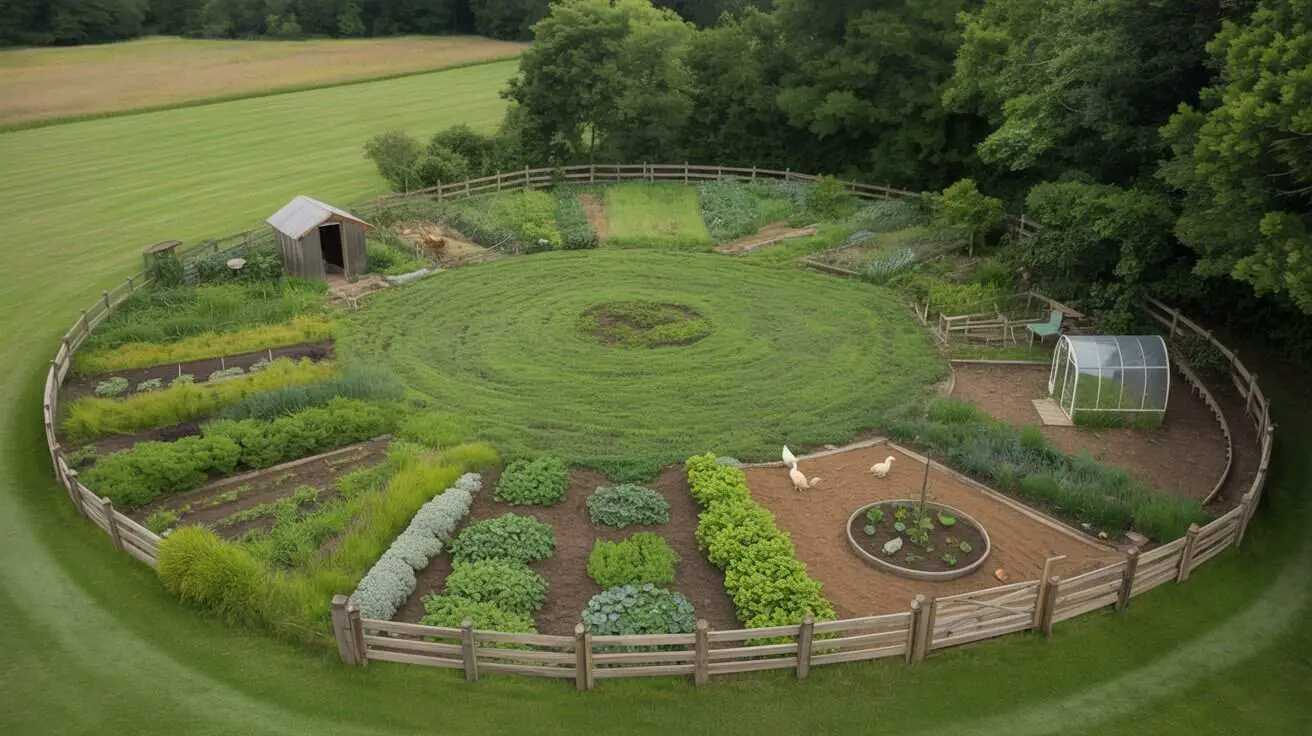
Ever dream about a life with chickens clucking in the background, a veggie patch you can actually eat from, and your kids chasing each other through grass that isn’t just for mowing? Yeah, same. Creating a small farm-inspired pasture garden isn’t just for people with acres and livestock—it’s totally doable in a backyard, on a side lot, or even a shared family plot.
This isn’t about becoming a full-time homesteader (unless you want to!). It’s about shaping your space—however big or tiny—into something that feels like a little slice of the good life. Somewhere between hobby farm and family garden, with a touch of fence-line charm and a whole lot of heart.
Whether you’re working with a rural country yard or just dreaming up your own backyard farm layout, here’s how to bring that homesteading aesthetic to life with real, functional design. You’ll end up with something beautiful, family-friendly, and totally grounded in the kind of simplicity we’re all craving these days.
Start With the Shape: Define Your “Pasture Garden” Layout
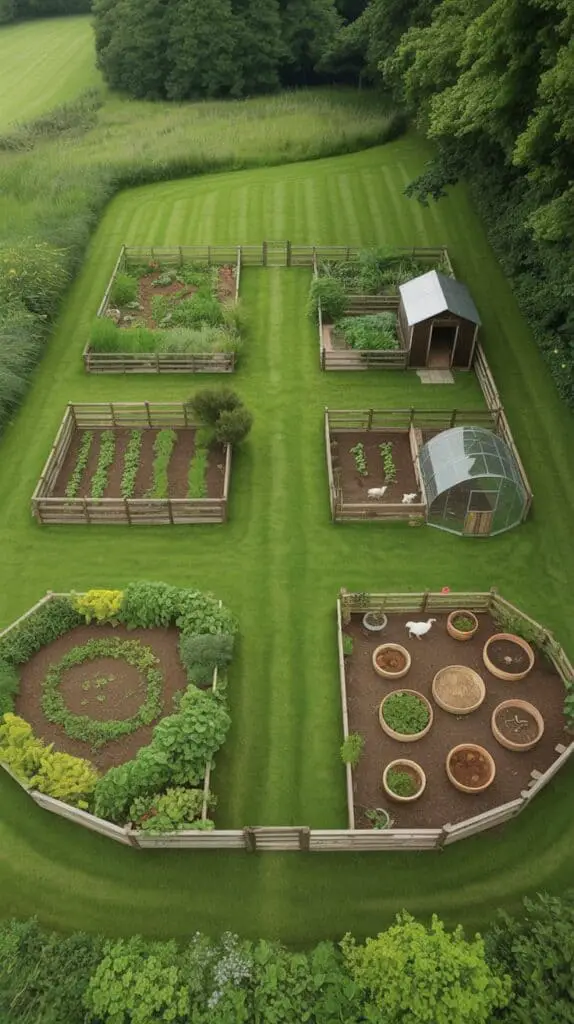
First things first—forget perfectly square gardens or cramped side plots. A pasture-style garden should feel open, a little wild, but still walkable and usable. It doesn’t matter if you’ve got a full acre or a wide suburban backyard—you can shape the layout to feel expansive by dividing the land into gentle zones.
Lay out a central open section—your “pasture” area—that’s kept mowed or lightly planted with clover, native grasses, or low-maintenance turf. Then build your functional zones around it:
- A fenced vegetable garden with raised or ground beds
- A mini orchard or berry patch with mulch rings and room to grow
- A small animal zone for chickens, rabbits, or ducks
- A sitting spot or firepit for evening family hangouts
Use visual anchors like a tool shed, greenhouse, or trellised archway to break up space without closing it in. That way it still feels farm-like but works for everyday life.
Choose the Right Fencing (It Sets the Whole Tone)
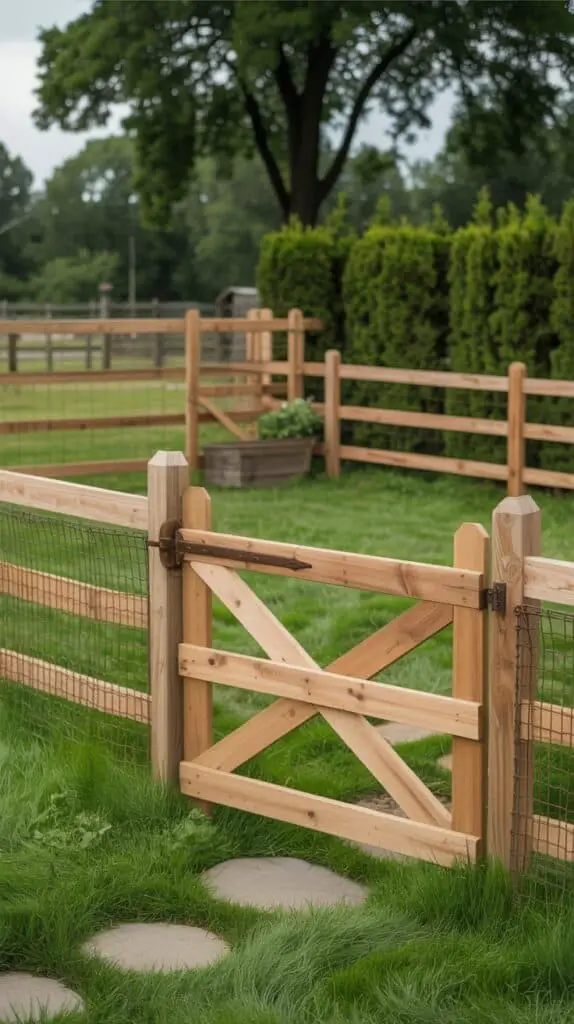
One of the easiest ways to create that homestead farm vibe is to install a fence that feels like it’s been there for years—even if you just built it last weekend.
For small backyard farms, go with materials that are functional and look the part:
- Split-rail wood fencing: rustic, classic, and great for marking edges
- Woven wire fencing: perfect for keeping animals in (or out) without feeling too harsh
- Horizontal slat fencing: modern ranch aesthetic, easy to DIY
- Living hedges: not technically fencing, but great for softening zones
If you’re enclosing a garden or pasture area, use a combo—wire fencing inside a wood frame keeps animals safe and keeps the design grounded in that country landscaping look.
And don’t forget gates! A simple wooden gate with metal hardware instantly adds charm.
Create a Working Garden With Country Yard Charm
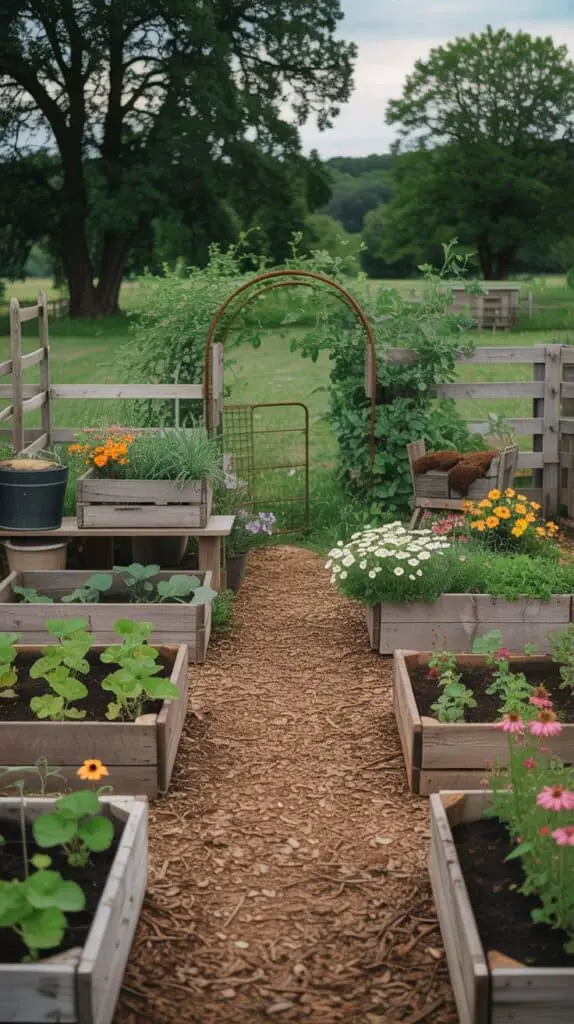
The garden is the heart of your pasture space—and it doesn’t need to be fancy to feel like a dream farm setup.
Start with the basics:
– Choose raised beds or mounded rows depending on your soil
– Add mulch paths or crushed gravel for walkability
– Keep things organized, but allow space for overgrowth (on purpose!)
Mix in flowers with your veggies—zinnias, nasturtiums, and marigolds do double duty as pollinator magnets and natural pest control. Add old buckets, salvaged wood crates, or hanging baskets for that hobby farm aesthetic that feels casual and lived-in.
And if you’ve got room? Tuck in a compost pile or two. It’s farm life gold.
Want more structure? Add an arched trellis walkway or a vintage metal gate into your garden zone to create a soft, storybook entrance. It’s all about little touches that make the space feel kept, not clinical.
Add Animals (Even Just One Coop Makes a Difference)
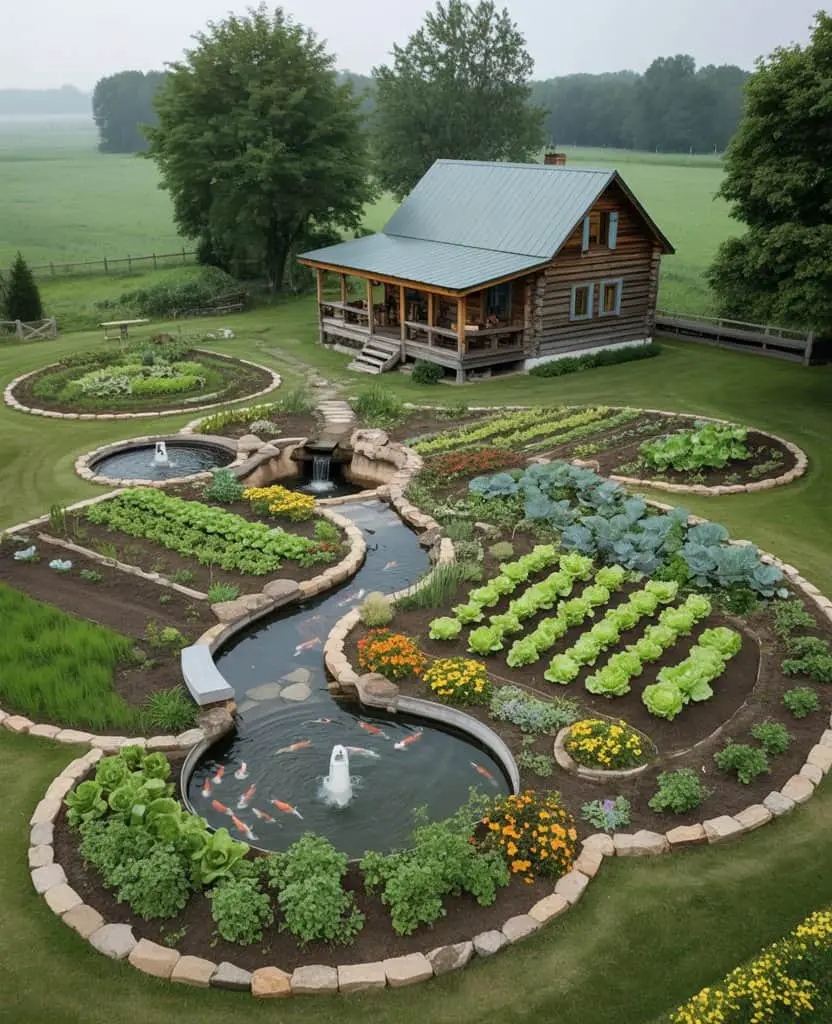
Nothing says homestead life like animals. Even if you’re not ready for goats and pigs (yet), a backyard chicken coop or rabbit hutch adds real movement and rhythm to your space.
Place your animal zone along the outer edge of your pasture garden, preferably near a shed or fence for wind protection. Here’s what works well:
- A wooden chicken coop with a small run (bonus points for a green tin roof)
- A duck yard with a mini splash pond or tub
- A bunny shelter tucked under trees with wire fencing and raised platforms
Don’t overthink it—the goal isn’t perfection, it’s practicality. Use straw, moveable shade, and natural wood to blend the setup into your garden.
The presence of animals makes the space feel alive and full of purpose. It’s also really fun for kids (and kind of meditative for adults, honestly).
Keep It Human: Add a Family Gathering Area
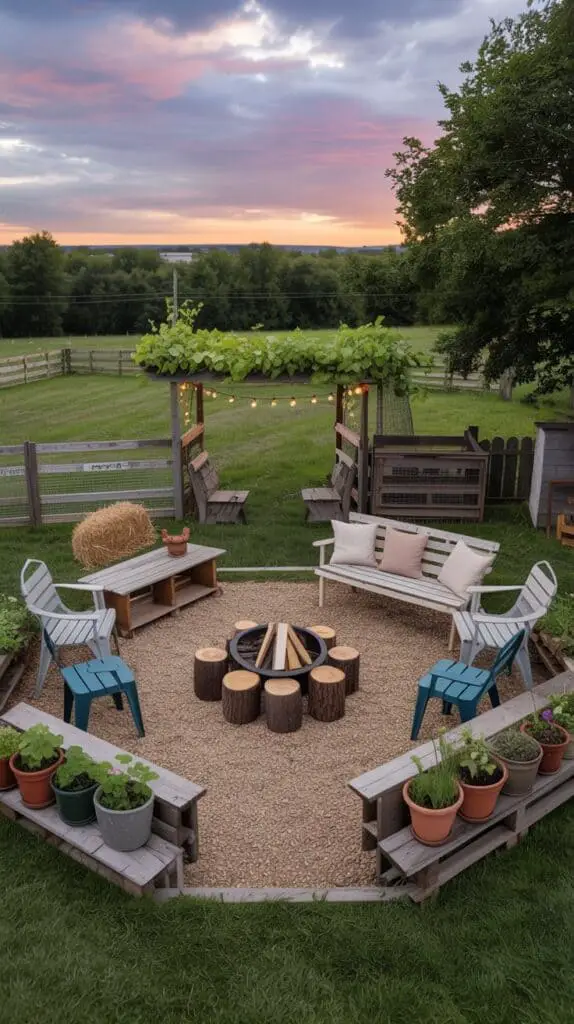
This might be the most important part—don’t forget to make space for you. A small pasture-style garden should serve your family just as much as your harvest.
Dedicate one corner or central area for human gathering. Think:
- A gravel patio with wooden benches or old metal chairs
- A firepit zone with log seats and potted herbs around the edge
- A picnic table under string lights or grapevines
Even a few hay bales and a plank of wood can make a table in a pinch.
This is where the whole vibe of homesteading life comes together. It’s not just about growing food or fencing off chickens—it’s about sitting outside as the sun sets, hearing the birds, and actually enjoying the little setup you’ve made.
Because honestly? That’s the dream farm part most of us are really chasing.
Final Thoughts
A small family pasture garden isn’t about going full pioneer mode—it’s about making just enough space in your own life for slowness, nature, and a bit of hands-in-the-dirt joy.
You can build your own version of a tiny farm, whether you’ve got half an acre or a suburban backyard with a fence and a dream. Lean into what works for your space, your kids, your pets, your weekends. Start with one fence, one garden bed, or one coop—and see where it grows.
In the end, homestead farm life is less about the land, and more about how you use it.
